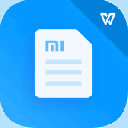





Concrete Technology

Beschreibung von Concrete Technology
It is swipe based design for civil engineering student to learn concrete technology. It almost cover all important topics with their graphics chapter wise which are given below
Chapter 1 Introduction and Classification
1. Introduction
2. Classification
3. Properties
4. advantage & disadvantages of concrete
5. Ingredients of concrete
6. types of cement
7. Testing Inspection & testing of materials as per Indian Standard Specifications
Chapter 2 Properties of Fresh and Hardened Concrete
1. Properties of Fresh and Hardened Concrete
2. Testing of concrete
3. Factors affecting
4. Rheology of concrete
5. Compressive & Tensile strength
6. Stress and strain characteristics
7. Shrinkage and temperature effects
8. Creep of concrete
9. Permeability
10. durability
11. thermal properties & micro-cracking of concrete'
Chapter 3 Design of Concrete Mix
1. methods of concrete mix design
2. I.S. code method
3. basic considerations and factors influencing the choice of mix design
4. acceptance criteria for concrete
5. concrete mixes with Surkhi and other Pozzolanic materials
6. design of plastic concrete mix
7. computer aided design of concrete mix
Chapter 4 Production and Quality Control of Concrete
1. Production of crushed stone aggregate
2. batching equipments for production and concreting
3. Concreting underwater
4. hot & cold weather condition
5. Quality Control Issues
6. non-distructive testing
7. repair technology for concrete structures
8. Inspection & Testing of Concrete
Chapter 5 Special Concretes
1. Light weight concrete
2. Ready mix concrete
3. Vacuum concrete
4. Ferrocement
5. Fiber reinforced concrete
6. Polymer concrete composites
7. Shotcrete
8. Guniting
9. Rubble concrete
10. Resin concrete
11. Prestressed concrete
12. Heat resistant concrete
13. Mass concrete
</div> <div jsname="WJz9Hc" style="display:none">Es wird auf der Basis-Design für den Tiefbau Studenten Swipe, um Betontechnologie zu erfahren. Es fast decken alle wichtigen Themen mit ihren Grafiken Kapitel weise, die unten angegeben sind
Kapitel 1 Einführung und Klassifizierung
1. Einleitung
2. Einstufung
3. Eigenschaften
4. Vorteile & Nachteile der Beton
5. Zutaten aus Beton
6. Zementarten
7. Testing & Inspection Materialprüfung nach Indian Standard-Spezifikationen
Kapitel 2 Eigenschaften von Frisch- und Festbeton
1. Eigenschaften von Frisch- und Festbeton
2. Prüfung von Beton
3. Faktoren mit Auswirkung
4. Rheologie von Beton
5. Druck & Zugfestigkeit
6. Spannungs- und Dehnungseigenschaften
7. Schwindung und Temperatureffekte
8. Kriechen von Beton
9. Durchlässigkeit
10. Haltbarkeit
11. thermischen Eigenschaften und Mikrorissbildung des Betons "
Kapitel 3 Auslegung der Betonmischung
1. Methoden der Betonrezeptur
2. I. S. Code-Methode
3. grundlegenden Überlegungen und Faktoren, die die Wahl der Mischungsentwurf
4. Akzeptanzkriterien für Beton
5. Betonmischungen mit Surkhi und andere Puzzolanmaterialien
6. Konstruktion von Kunststoffbetonmischung
7. Computer Aided Design von Betonmischung
Kapitel 4 Produktion und Qualitätskontrolle von Beton
1. Herstellung von Schotter Zuschlag
2. Dosierung Ausrüstungen für die Produktion und Betonieren
3. Betonieren unter Wasser
4. hot & cold weather condition
5. Qualitätskontrolle Probleme
6. Nicht-destruktive Test
7. Reparaturtechnologie für Betonstrukturen
8. Inspection & Testing of Concrete
Kapitel 5 Spezialbetonen
1. Leichtbeton
2. Transportbeton
3. Vakuumbeton
4. Ferrocement
5. Faserbeton
6. Polymerbeton Verbundwerkstoffe
7. Spritzbeton
8. guniting
9. Bauschutt Beton
10. Harzbeton
11. Spannbeton
12. Hitzebeständige Beton
13. Massenbeton</div> <div class="show-more-end">




























